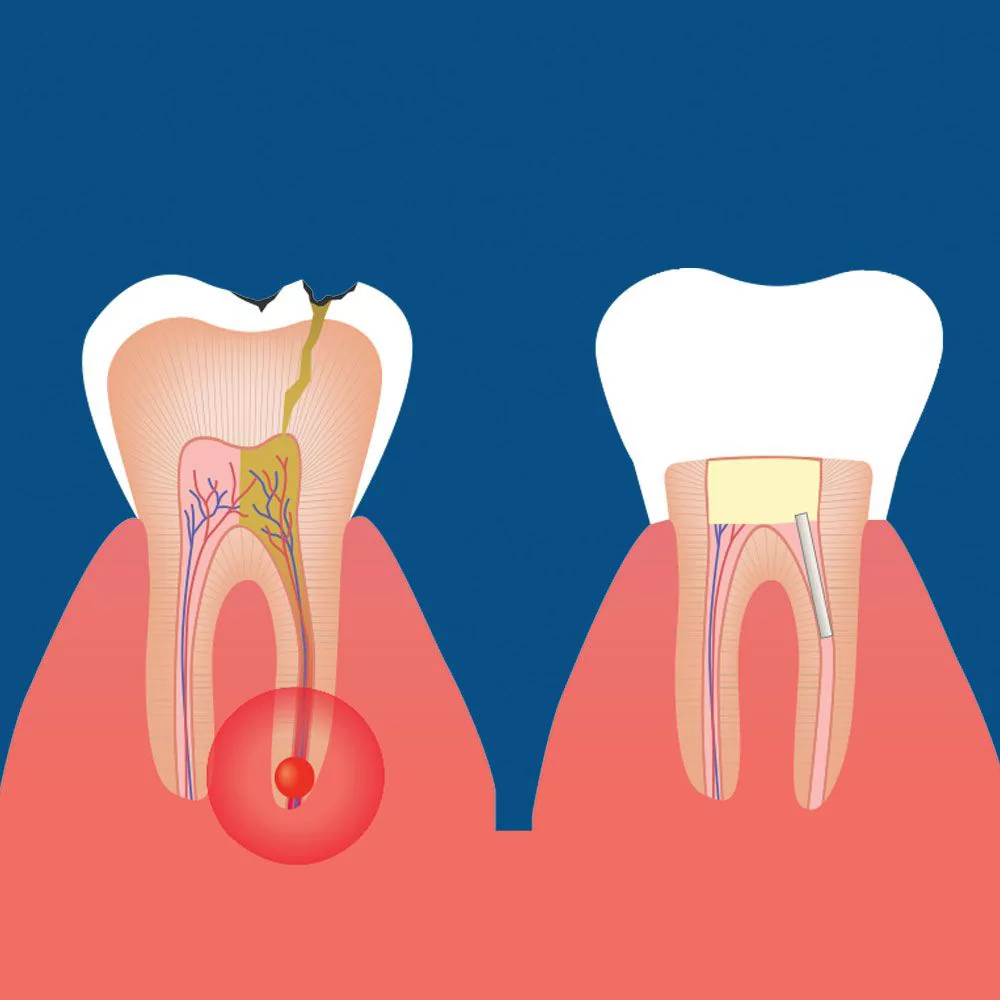Root Canal Therapy
What is Root Canal Treatment?
Root canal treatment, also known as endodontic therapy, is a procedure performed to treat the inside of the tooth when its pulp becomes infected or inflamed. The pulp, located in the center of the tooth, contains nerves, blood vessels, and connective tissue. When it becomes infected due to deep decay, trauma, or a crack in the tooth, it can lead to severe pain and swelling if left untreated.
There are a number of signs that suggest root canal therapy may be necessary:
- Sensitivity to hot and cold.
- Severe toothache.
- Red or swollen gums near the tooth.
- Discoloration of the tooth.
- An abscess (or pimple) on the gums.
- Pain radiating to head of neck.
- Pain during change in posture.

What To Expect During Root Canal Treatment?

Diagnosis and Treatment Plan
During your first visit, we’ll conduct a thorough examination, including digital X-rays, to assess the condition of your tooth and determine if root canal therapy is necessary. The doctor may prescribe an antibiotics to help control infection and inflammation which generally causes toothache. Reducing this inflammation in advance reduces pain during the procedure.

Root Canal Treatment Process
Root canal therapy is typically completed in two to three visits, depending on the complexity of the case. When we’re ready to perform the root canal, we will gently numb your tooth. Once you’re comfortable, the dentist will remove the infected pulp which was causing you pain, clean and disinfect the root canal, and seal it to prevent further infection. Following root canal therapy, you may experience some mild discomfort or sensitivity, which can usually be managed with over-the-counter pain medication. Most patients can resume normal activities immediately after treatment.

Tooth Restoration + Crown
Following the root canal procedure, the roots are filled with a biocompatible material to seal off any remaining space and prevent future infection. Once the tooth is stabilized, we restore its structure with tooth-colored filling material, ensuring both functionality and aesthetics. Finally, the tooth is meticulously prepped to receive a crown, which adds an extra layer of reinforcement, ensuring its longevity and strength for years to come. This comprehensive approach to restoration guarantees not only the preservation of your natural tooth but also the restoration of your confident smile.



